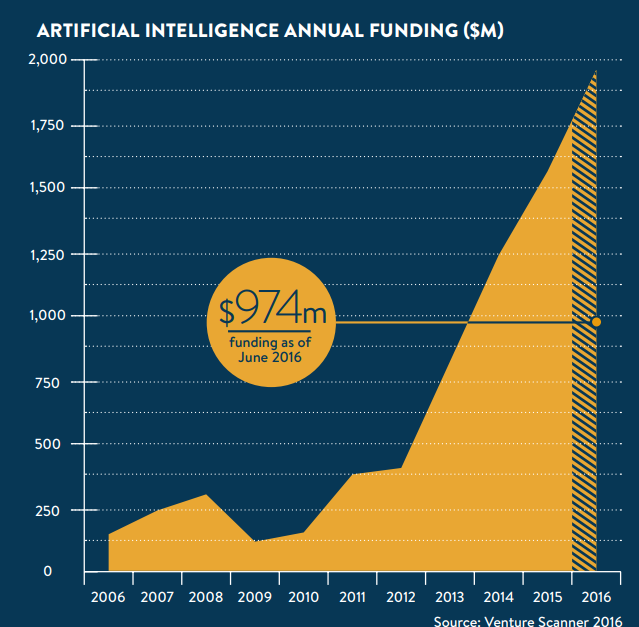
AI Spending Set to Skyrocket, So What’s the Holdup?
(I000s pixels/Shutterstock)
If your business is investing in artificial intelligence (AI), congratulations — it shows understanding of the potential risks and rewards associated with the emergence of this powerful new technology. While billions of dollars are going into AI, there are still considerable barriers preventing enterprises from getting where they want to be. One solution, in particular, is intriguing.
Teradata shed some light on the matter of AI adoption with a recent report that was released ahead of its user conference last month. The big news from the study, which was conducted by Vanson Bourne on behalf of the analytics giant and included responses from 260 technology and business executives from around the world, is that 80% of enterprises are already investing in some form of AI.
That may come as a shock, until you realize that AI is a broad category that includes established analytical techniques, like machine learning and natural language processing, as well as emerging techniques like deep learning that are currently on the bleeding edge of technology development. Not everybody is building smart data pipelines with Tensorflow and Kafka, but many are leveraging regression analyses that are pre-baked into their favorite BI tools.

AI spending is on a steep growth curve, according to Raconteur
Here are some more pertinent figures from Teradata’s report, which is titled “State of Artificial Intelligence for Enterprises.” It found that AI is in “significant use” at 38% of enterprises, where it’s a regular and accepted part of business processes. AI is being used but has “lots of room” for expansion at 42% of enterprises, according to the survey. Among the remaining 20% who aren’t currently AI users, 15% are planning to use AI within 12 months while 5% plan to adopt it within 24 months.
Put another way: All enterprises apparently have AI in their plans. That is a remarkable statistic, and shows just how pervasive the idea of automation is in business today.
The next question, then, is how much are we spending on AI, and how fast is it growing? Here are a couple of data points to consider.
According to a September report from IDC, organizations will increase their spending on AI and cognitive technologies by 50% every year through 2021. Starting from a baseline of $12 billion spent on AI and cognitive in 2017, that means worldwide annual spending will reach about $58 billion within four years.
Automated customer service agents, i.e. “chatbots,” will lead the charge, accounting for $1.5 billion in AI and cognitive investment, IDC found. Other popular use cases over the next four years will include automated preventative maintenance, expert shopping advisors and product recommendations, public safety and emergency response, and intelligent process automation.

Source: Teradata
“We are seeing cognitive and AI technology and solutions weaving into an ever broader and wider array of applications and use cases,” said David Schubmehl, research director for Cognitive/Artificial Intelligence Systems at IDC.
The return on investment (ROI) of these types of AI project will be good. According to Teradata, enterprises will see a 23% positive return on every dollar invested over the next three years. That ROI grows to 187% over the next 10 years as a whole, the company found.
Those forecasted ROI figures differ significantly from an actual ROI survey that Teradata conduced two years ago. That study, which was conducted by McKinsey and Forbes, found that only two out of three organizations that had adopted big data were getting a positive return of their projects, and of those getting a positive return, the return was typically from 1% to 3% (as measured either by revenue increases or cost decreases).
So the current AI picture has gotten significantly rosier than the big data picture from 2015. But is it rosy enough? In fact, Teradata found that it could be – and that in fact there are serious barriers to AI adoption that could increase the potential return even more.
More than nine out of 10 respondents to Teradata’s survey say there are significant barriers to AI adoption, with a lack of IT infrastructure cited at the top of the list. Beyond the servers and the OSes and the networks, the survey respondents cited a lack of access to talent, the unproven nature of AI technology, and a lack of budget as the biggest impediments to achieving AI success.

Source: Teradata
So how can enterprises steer themselves on a path to AI enlightenment? There are various schools of thought on this subject, not surprisingly. But one of more interesting ideas to come out of Teradata’s survey is a widespread desire to establish a new position for a Chief AI Officer, or a CAIO.
Only 8% of those surveyed by Teradata had a CAIO, but 45% say they plan to employ one in the next 12 months, while another 17% say they plan to hire a CAIO on the 24-month horizon. Only 18% of those surveyed have no plans to hire a CAIO.
“Enterprises today see AI as a strategic priority that will help them outpace the competition in their respective industries,” Teradata’s Vice President of Emerging Practices at Think Big Analytics Atif Kureishy says. “But to leverage the full potential of this technology and gain maximum ROI, these businesses will need to revamp their core strategies so AI has an embedded role from the data center to the boardroom.””
Related Items:
How AI Could Reshape Economies






























